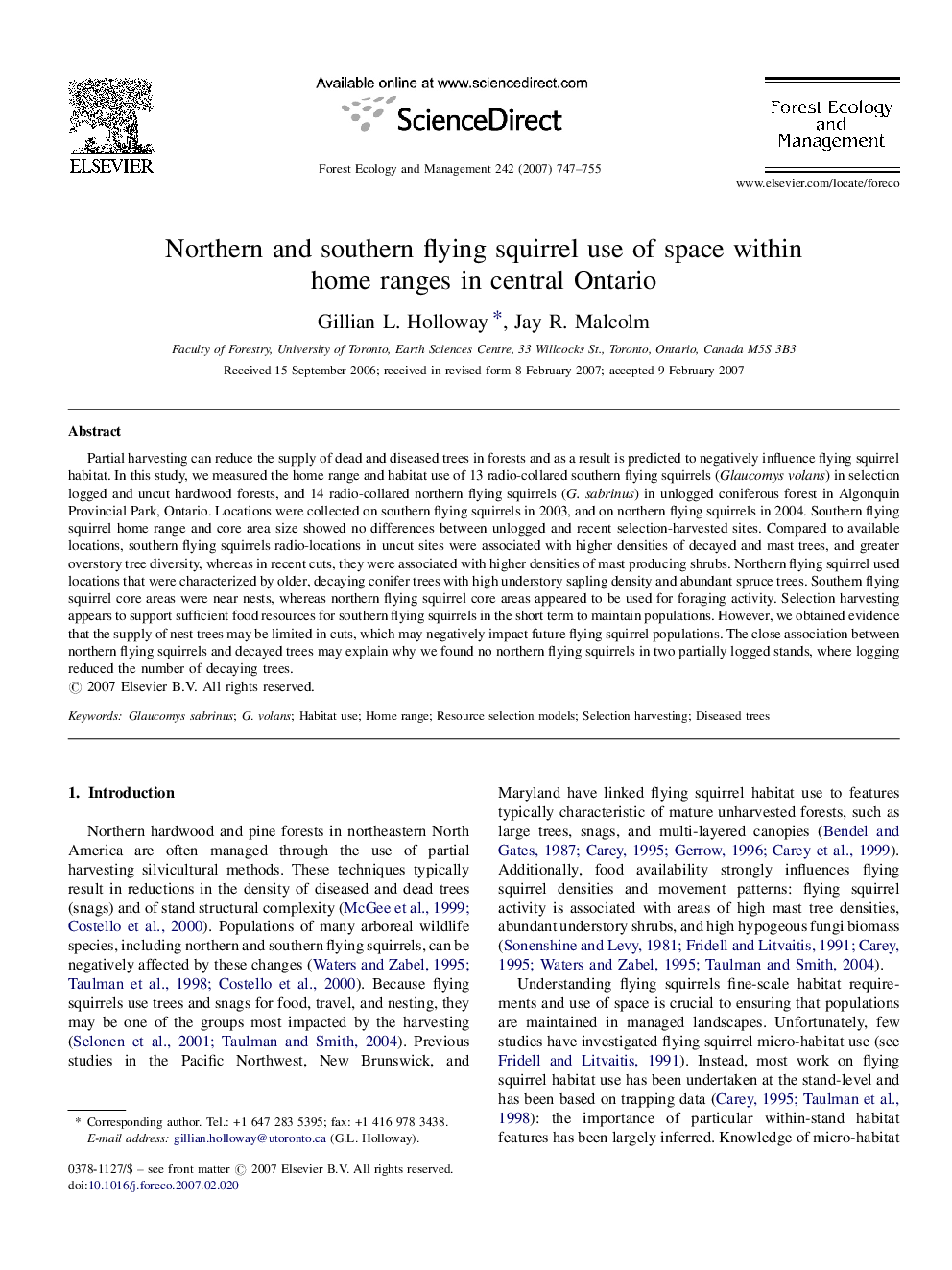| Article ID | Journal | Published Year | Pages | File Type |
|---|---|---|---|---|
| 90685 | Forest Ecology and Management | 2007 | 9 Pages |
Partial harvesting can reduce the supply of dead and diseased trees in forests and as a result is predicted to negatively influence flying squirrel habitat. In this study, we measured the home range and habitat use of 13 radio-collared southern flying squirrels (Glaucomys volans) in selection logged and uncut hardwood forests, and 14 radio-collared northern flying squirrels (G. sabrinus) in unlogged coniferous forest in Algonquin Provincial Park, Ontario. Locations were collected on southern flying squirrels in 2003, and on northern flying squirrels in 2004. Southern flying squirrel home range and core area size showed no differences between unlogged and recent selection-harvested sites. Compared to available locations, southern flying squirrels radio-locations in uncut sites were associated with higher densities of decayed and mast trees, and greater overstory tree diversity, whereas in recent cuts, they were associated with higher densities of mast producing shrubs. Northern flying squirrel used locations that were characterized by older, decaying conifer trees with high understory sapling density and abundant spruce trees. Southern flying squirrel core areas were near nests, whereas northern flying squirrel core areas appeared to be used for foraging activity. Selection harvesting appears to support sufficient food resources for southern flying squirrels in the short term to maintain populations. However, we obtained evidence that the supply of nest trees may be limited in cuts, which may negatively impact future flying squirrel populations. The close association between northern flying squirrels and decayed trees may explain why we found no northern flying squirrels in two partially logged stands, where logging reduced the number of decaying trees.
